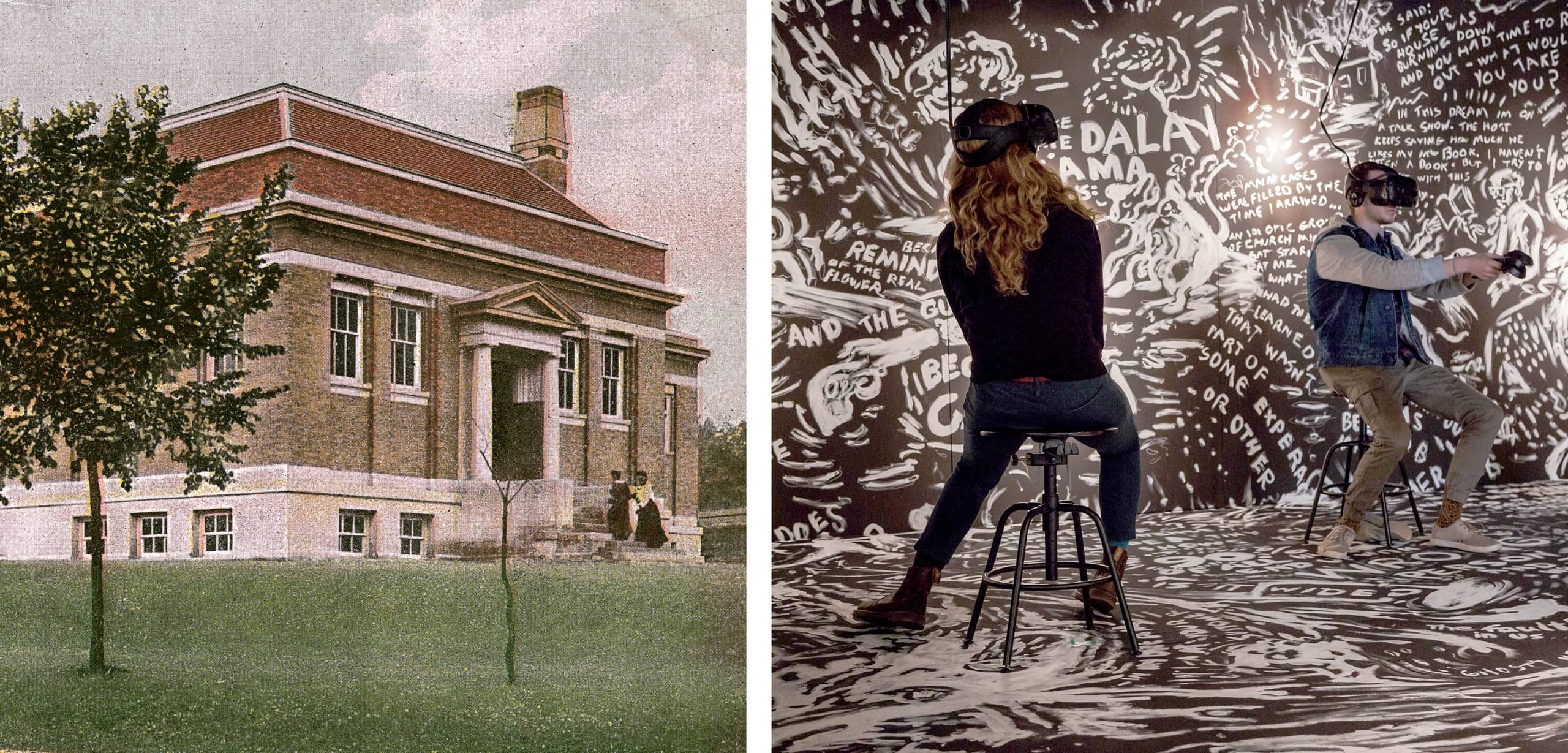
Time Machine: Scripps Hall
What began as the first campus building established for use as a library has become OHIO’s home for educating communicators skilled in the latest means of storytelling, information sharing and entertaining—and a testament to the rapidly changing world of communication.
Mary Reed, BSJ ’90, MA ’93 | March 9, 2022
Share:
The building at the southwest corner of Ohio University’s historic College Green has always been dedicated to communication and communication technology. But what began as the first campus building established for use as a library has become OHIO’s home for educating communicators skilled in the latest means of storytelling, information sharing and entertaining—and a testament to the rapidly changing world of communication.
A library for campus and community
Industrialist and philanthropist Andrew Carnegie famously endowed more than 2,500 libraries between 1883 and 1929. One of those was the Carnegie Library, an architecturally distinct building on Ohio University’s Athens Campus.
Built in 1904 in the Second Renaissance Revival style and dedicated in 1905, it was the first campus building constructed to be a dedicated library—a repository for the university’s then collection of some 16,000 volumes that had been housed in a corner of Cutler Hall. View a blueprint of Carnegie Library
Carnegie donated $30,000 to build the library with the stipulation that it be open to campus and the local community—a request that Ohio University Libraries continues to honor today. It only took about 25 years for the University’s collection of books to outgrow Carnegie Library. In 1931, OHIO opened its new Edwin Watts Chubb Library (now Chubb Hall), and, in 1936, the building formerly known as Carnegie Library was renamed Carnegie Hall and remodeled for classrooms and offices.
It would be another half century until the building wrote its next chapter—and brought an iconic name to Ohio University.
Carnegie becomes Scripps
In 1982, a $1.5 million endowment from the Scripps Howard Foundation paved the way for OHIO’s newly named E.W. Scripps School of Journalism and the transformation of Carnegie Hall into E.W. Scripps Hall. Both the school and the building were named in honor of Edwin Willis “E.W.” Scripps, who founded the E.W. Scripps Company, one of the most successful media conglomerates in the nation.
Ground was broken in the fall of 1984 on a $3.2 million renovation to the building and the property, including the creation of an amphitheater that has become a cherished destination on campus. Dedicated in 1994 in honor of former College of Communication Dean John Wilhelm, who covered the D-Day invasion of World War II, the Wilhelm Amphitheater has played host to everything from summer concerts and Shakespeare productions to marches and protests.
The journalism school took up residence in its new headquarters in 1986, offering students the latest in technology— from word processors to laser printers, and later computers, digital photo processing tools and email. Scripps Hall also served as an Associated Press wire service station.
“At that time, it was still print and rip,” says Dr. Eddith Dashiell, who joined the E.W. Scripps School of Journalism in 1992 and was named its director in 2020. “It wasn’t 100 percent digital.”
Scripps Hall was also home to a broadcast journalism lab and studio complete with everything a student would find in a professional TV newsroom, with much of the equipment donated by an area news studio when it upgraded its equipment. ACTV-7 News broadcast from the ground floor of Scripps Hall on the local cable channel.
“Anyone living in Athens County could watch the newscast, which was a great recruiting tool for us,” Dashiell recalls. “Very few universities would allow live student news broadcasts … we did them every day.”
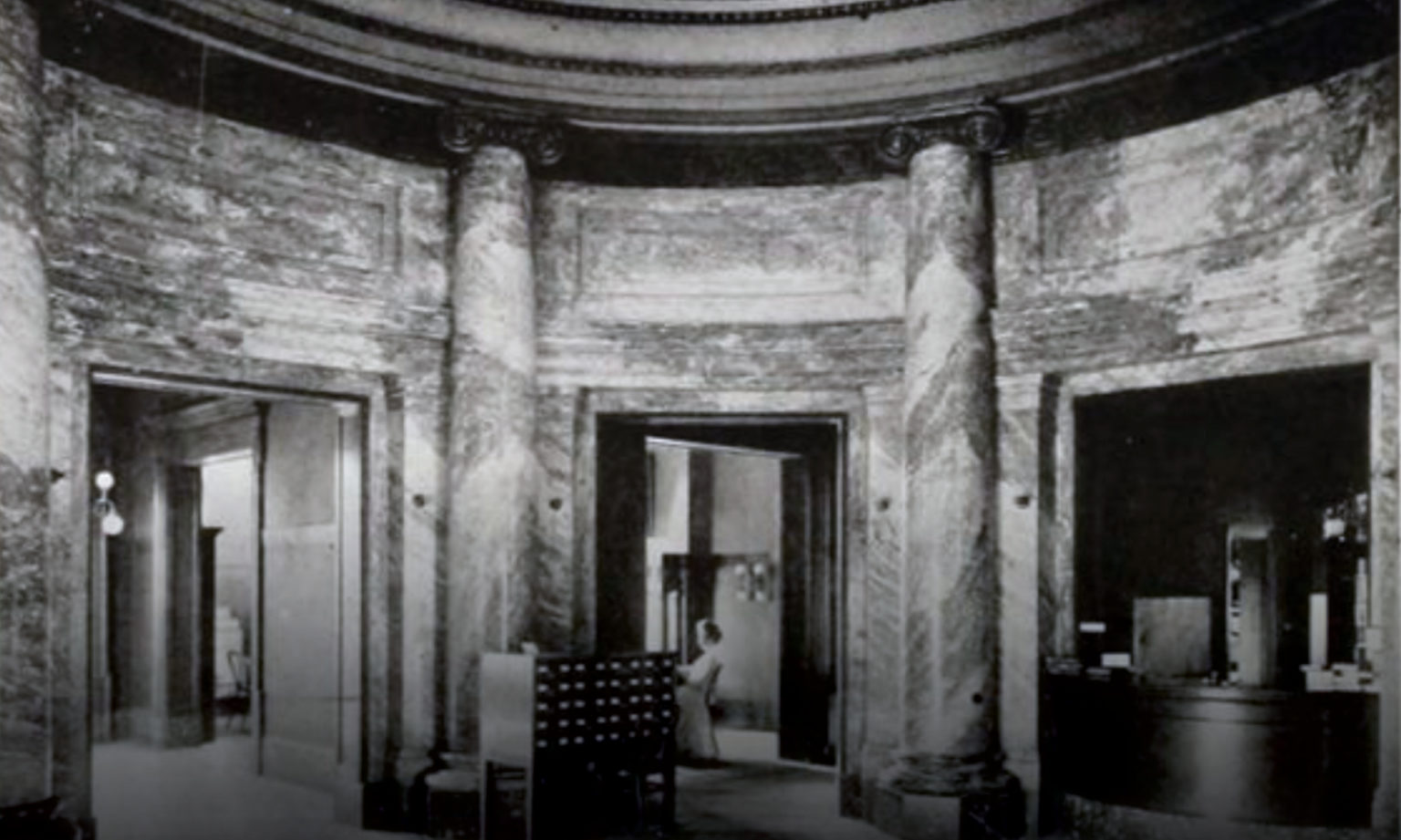
This photo from the 1911 Athena yearbook shows the interior of Carnegie Library. Photo courtesy of the Mahn Center
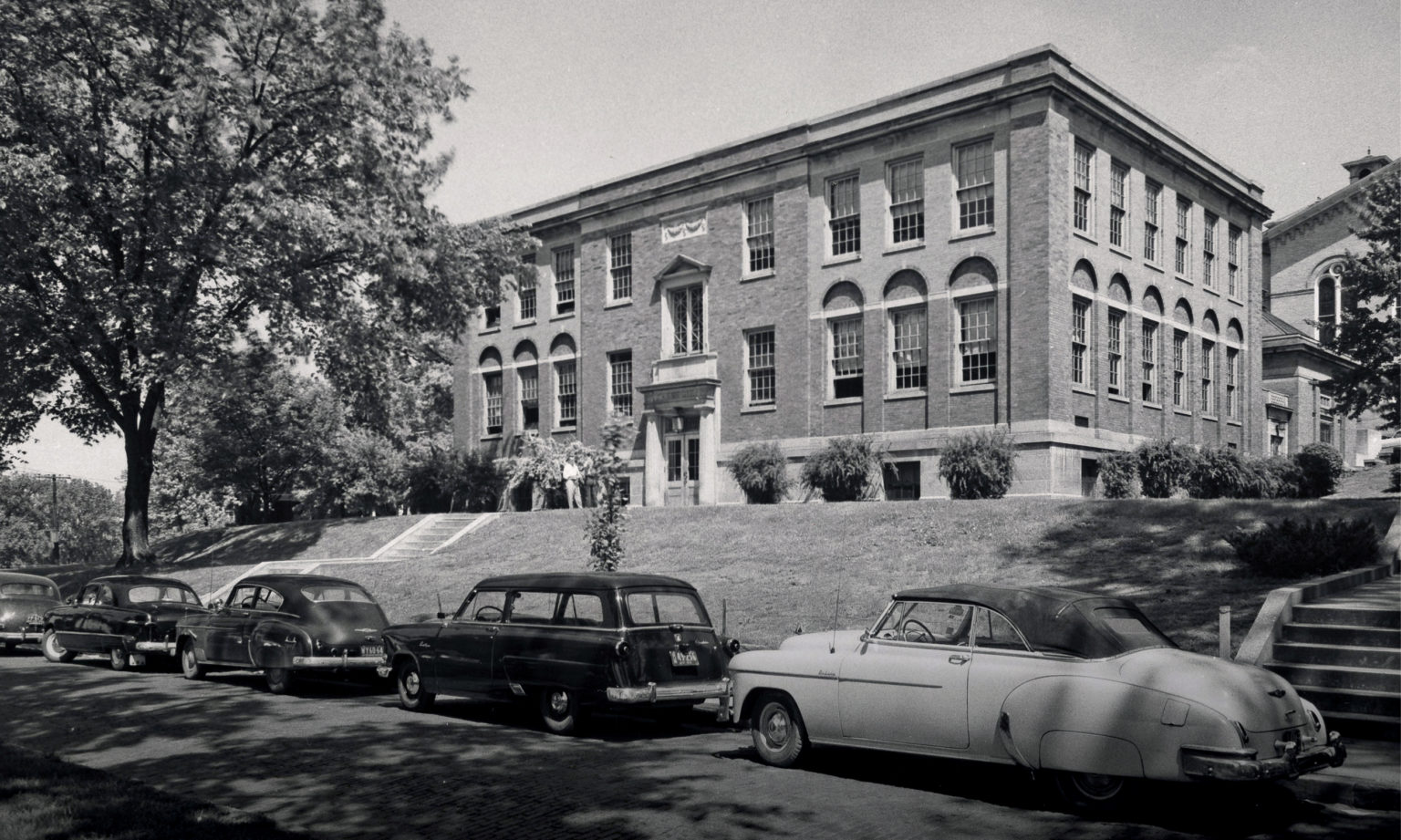
Pictured is the exterior of Carnegie Hall in the 1950s. Photo courtesy of the Mahn Center
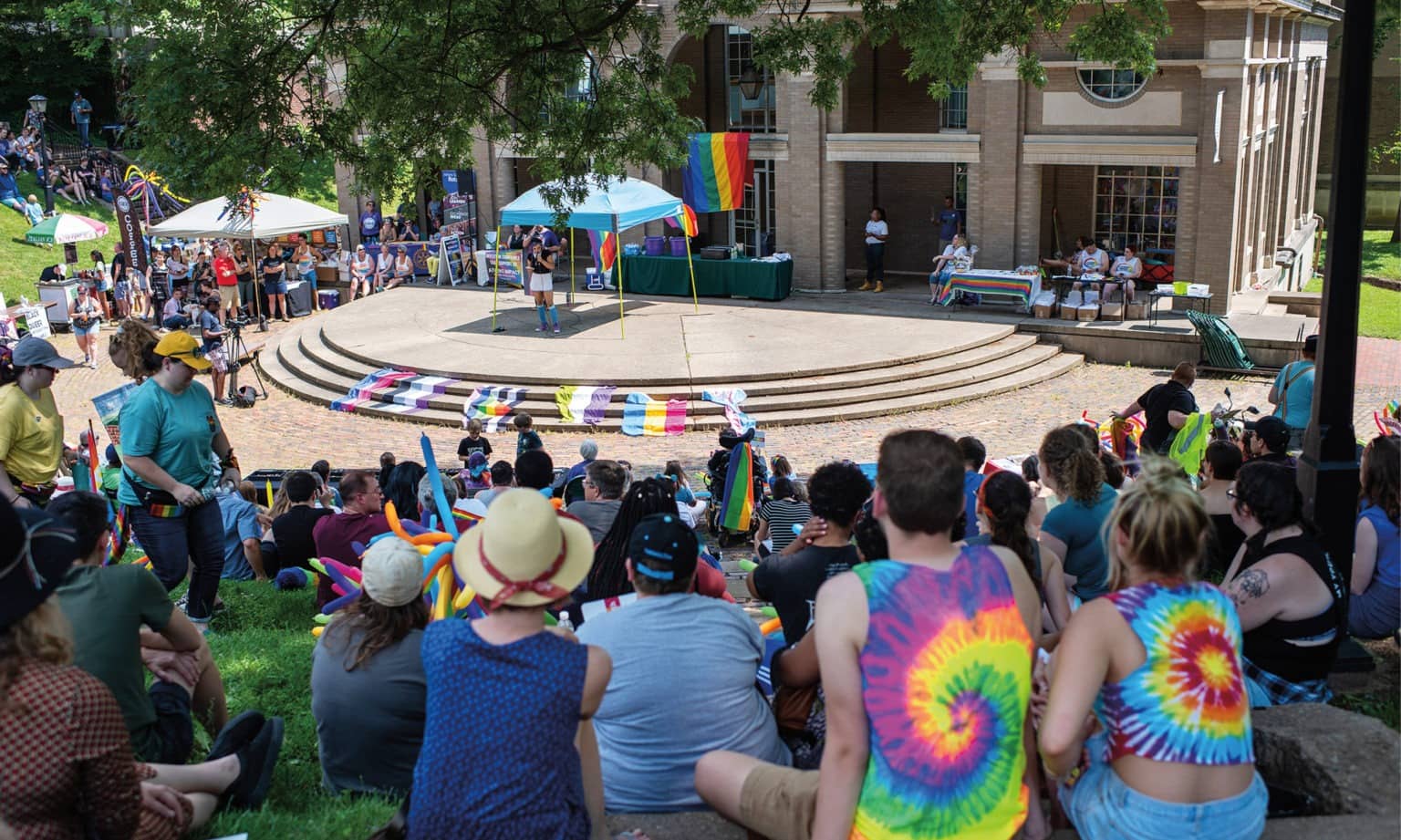
Town and gown gather at the Wilhelm Amphitheater during the 2019 Athens Pride Fest. Photo by Ben Wirtz Siegel, BSVC ’02
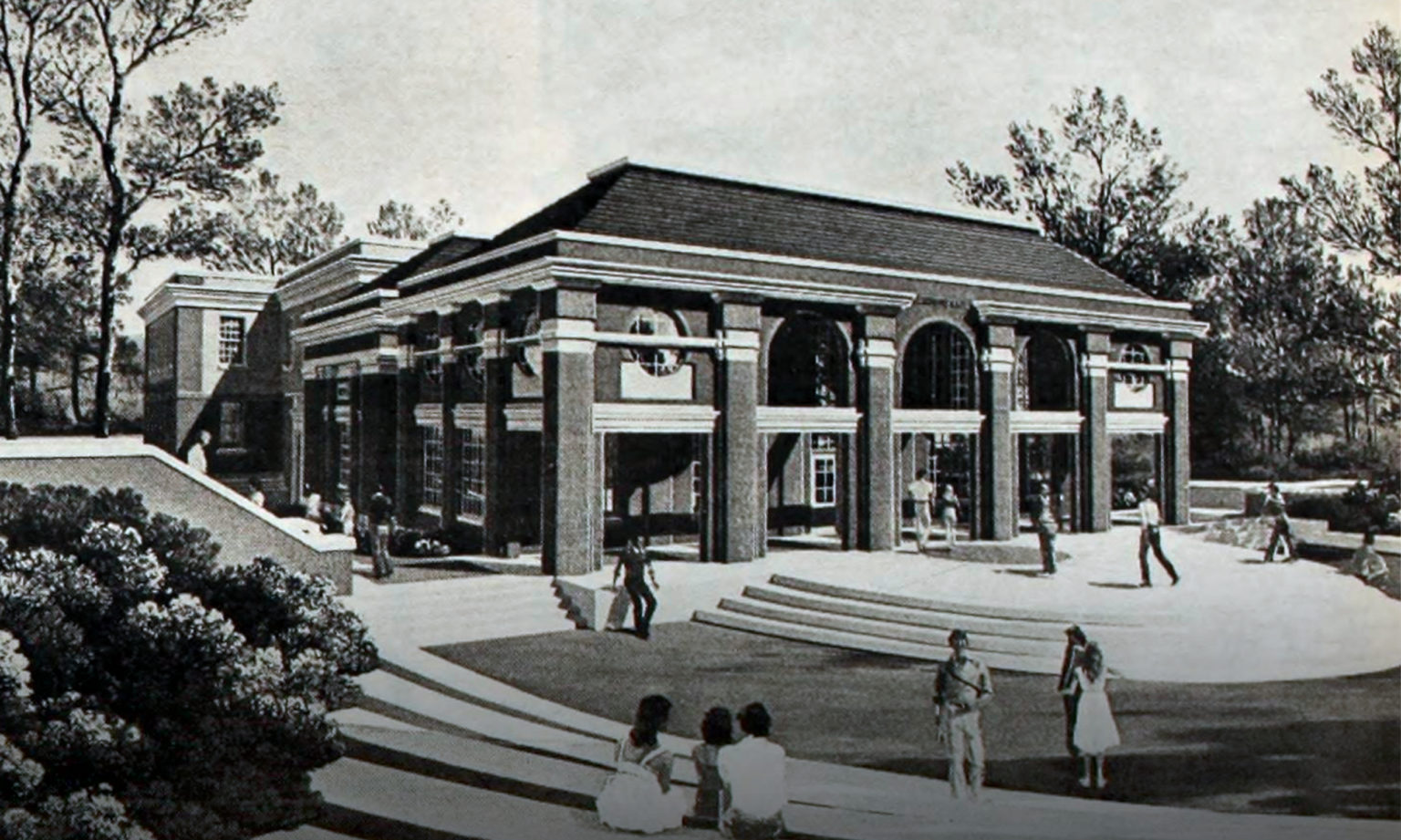
This rendering shows plans for the College Green entrance to and 300-seat amphitheater outside of E.W. Scripps Hall.
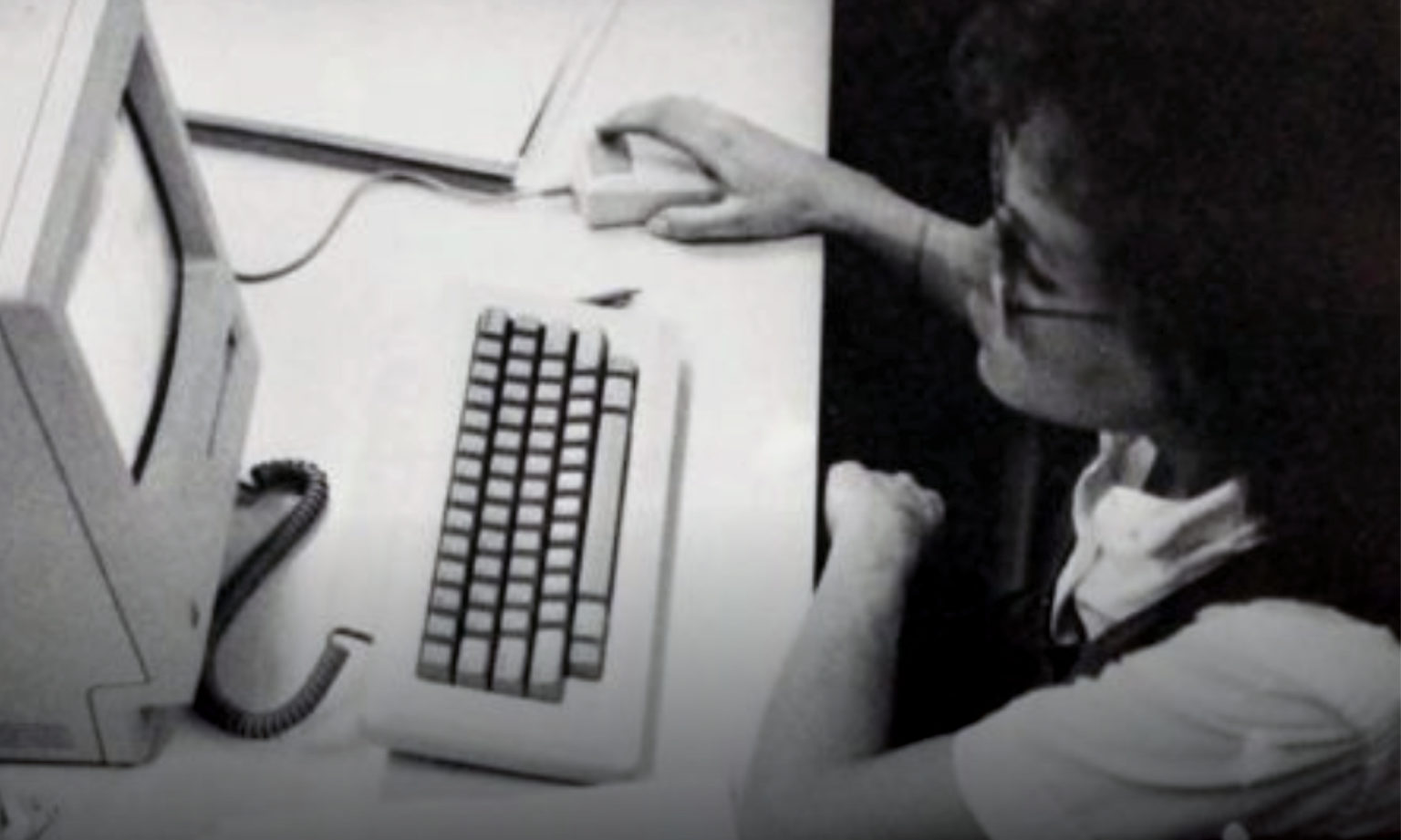
A student works on a MacIntosh computer in Scripps Hall in this 1988 Athena photo. Photo courtesy of the Mahn Center
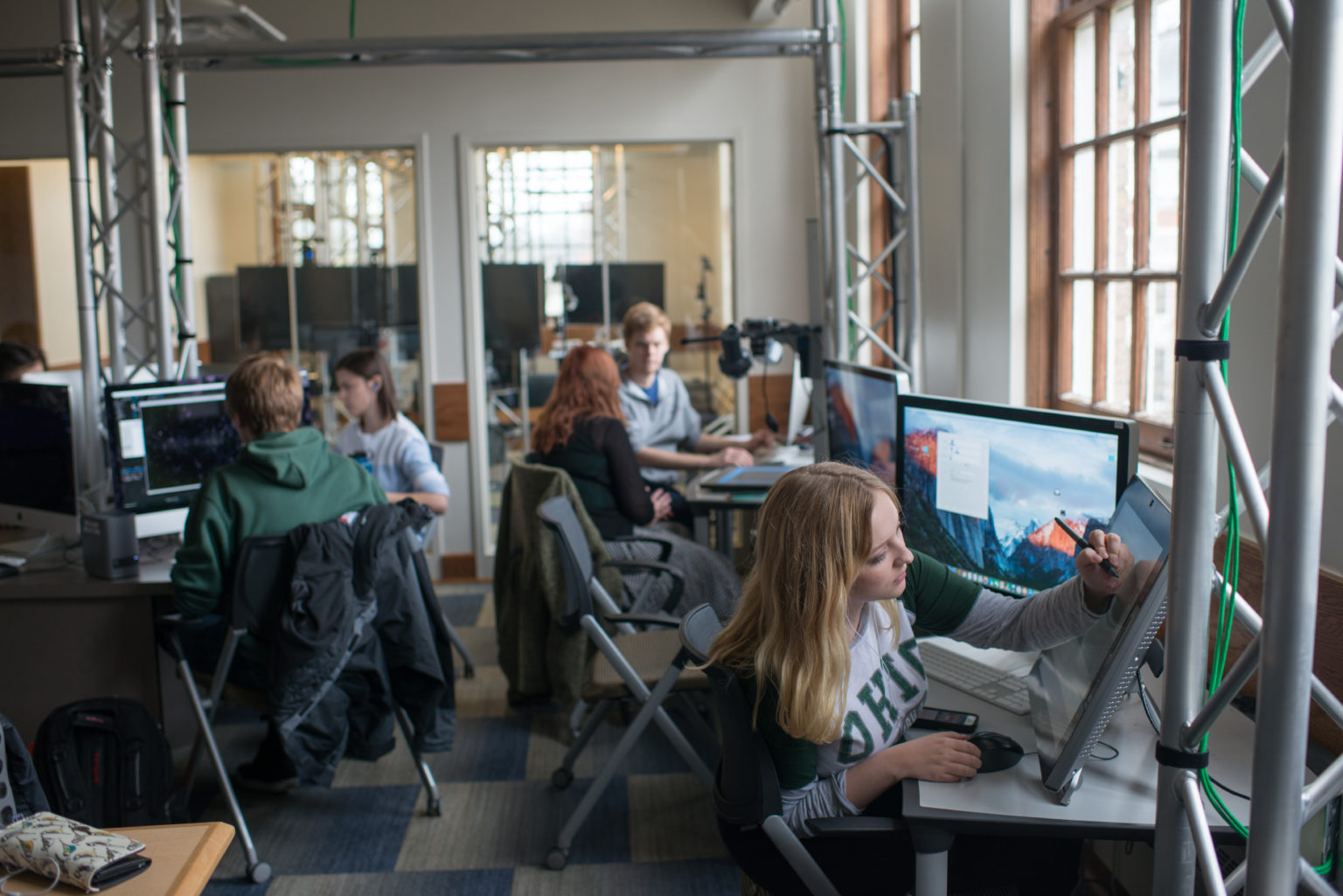
A student works in the GRID Lab inside today’s Scripps Hall. Photo by Ben Wirtz Siegel, BSVC ’02
A 21st-century makeover
In 2015, the new Steven L. Schoonover Center for Communication , housed in the original Baker Center, fully opened, bringing all of the Scripps College of Communication’s schools under one roof and ushering in a 21st-century makeover for Scripps Hall.
The building continued to be used for Scripps College of Communication programs, and the Game Research and Immersive Design (GRID) Lab moved into Scripps Hall during summer 2016. The GRID Lab uses interactive digital technology like games, simulation and augmented/virtual reality (AR/VR) to educate and entertain while serving campus and community. VR simulations produced in the GRID Lab have been used to train health care professionals to identify elder abuse and law enforcement personnel to learn de-escalation techniques.
With nearly $900,000 in funding from the Ohio University Innovation Strategy in 2016, Scripps Hall and the GRID Lab were outfitted with a motion capture lab (which uses lighting from the old broadcast journalism studio), 360-degree camera rigs and VR headsets.
“I think the GRID Lab is one of the best experiential learning labs on campus because students can use the space for what they want educationally,” says the lab’s director, John Bowditch, BSC ’04, MA ’06.
According to Bowditch, the GRID Lab has generated more than $4 for every $1 of the University’s initial investment. Faculty from all of OHIO’s colleges have conducted funded projects in the space, and at its pre-pandemic height nearly 70 students had paid work there.
The lab’s funded projects have also further contributed to Scripps Hall, which is now home to some 50 workstations and 200 mobile VR headsets, plus a cinematic virtual reality (cine-VR) lab, an immersive audio suite, a VR obstacle course, a research and development lab, and a gaming loft. The GRID Lab Studio allows students to check out cine-VR production gear like cameras, lighting kits and audio equipment—a library of sorts in a building that was originally a library.
The GRID Lab’s work and reputation have brought emerging communication technologies to the forefront of the student learning experience at OHIO. A new Virtual Reality and Game Development program in the J. Warren McClure School of Emerging Communication Technologies debuted fall semester, and earlier this year Animation Career Review ranked OHIO first in the state for AR/VR programs .
“We have students enter international film fests with the cine-VR projects they create,” Bowditch says. “Our students received seven awards from international film festivals last year.”
In addition to the GRID Lab, Scripps Hall houses the Barbara Geralds Institute for Storytelling and Social Impact , offices for the Ohio University Speech and Debate team and for MFA in Communication Media Arts students, and still has classrooms. This semester also brought a new addition to the building—an esports arena, located on the ground floor in space that previously housed the student-produced Southeast Ohio magazine.
“We couldn’t do any of this without the space,” says Bowditch. “We’re doing some of the most incredible work in the state, if not the country, in this space.”
Feature image: [LEFT] This postcard from the early 1900s shows what was originally Carnegie Library. Photo courtesy of the Mahn Center for Archives & Special Collections. [RIGHT] Students interact with an immersive virtual reality project inside the GRID Lab at today’s Scripps Hall. Photo by Daniel King, MA ’15.



